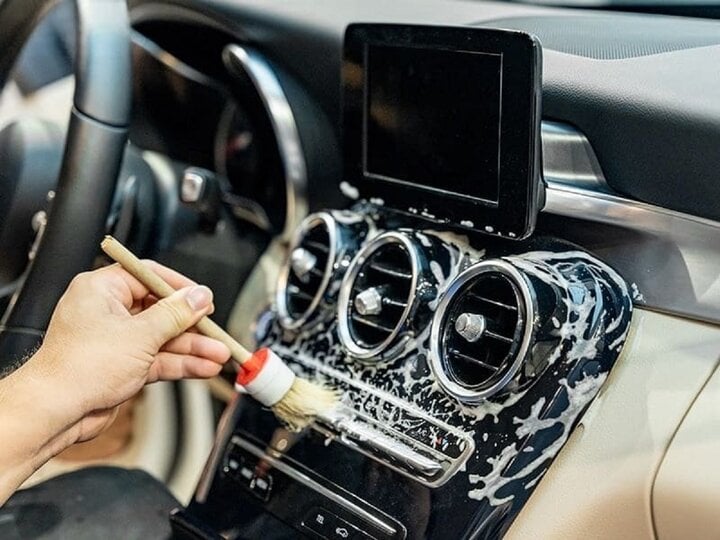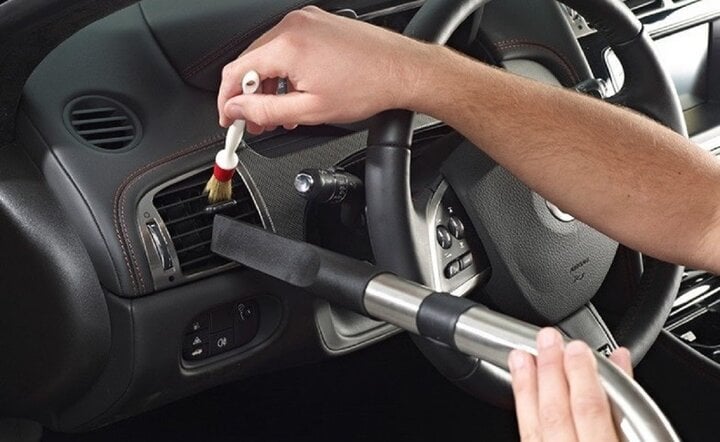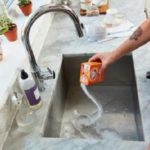Step 1: Cleanse
The first step is to remove any damp, wet, or dirty objects from the car, such as clothes, shoes, or towels. Leaving these items in the car for too long can lead to mold and mildew growth, which can create unpleasant odors.
Next, the car owner should thoroughly vacuum all the areas where dust and dirt can accumulate, such as the floor, seats, and crevices in the interior. Note that it is important to use a vacuum cleaner with a soft brush attachment for optimal dust and dirt removal. The floor mats should be removed and cleaned separately, and the area beneath them should be vacuumed as well.

Vinegar or interior cleaning solutions can be used for deodorizing. (Illustrative image).
If a specialized car vacuum cleaner is not available, a handheld vacuum cleaner or a household vacuum cleaner can be used instead. Particular attention should be paid to areas that tend to collect dirt, such as seat crevices, dashboards, and door pockets.
One common mistake that can lead to lingering odors and a damp feeling in the car is neglecting to clean floor mats made of leather. This type of floor mat does not absorb water or ventilate well, so water can accumulate underneath it after prolonged use. Therefore, it is important to periodically remove the mats for cleaning and to allow the area beneath them to dry thoroughly.
Step 2: Deodorize
After cleaning the car’s interior, the owner should use a specialized spray-on chemical deodorizer and spray it directly into the car, leaving the doors closed for about 5 minutes.
While driving the car, the owner can hang small scent bags containing coffee, green tea, or a mild citrus scent such as lemon or orange. These not only help to neutralize odors from the car’s engine but also help to purify the air, creating a more relaxing and pleasant atmosphere.
Vinegar can also be used for deodorizing. Mix vinegar with water in a 1:1 ratio, and then dip a clean cloth into the solution, wring it out, and use it to wipe down the areas that produce odors or the entire interior. This solution is safe to use on almost all types of materials, except for suede or Alcantara. After cleaning, all the car doors should be opened to air out the interior and allow the vinegar smell to dissipate.
If a steam cleaner is available, the owner can use it to soften stains, clean, and disinfect the interior. This involves spraying steam onto the surfaces that need to be cleaned, and then wiping the excess water with a cloth. This method is effective for removing stubborn stains that have set in over time, especially on areas such as floor mats, ceilings, and seats.

Vacuuming is the first step in cleaning a car’s interior. (Illustrative image)
Step 3: Condition
After deodorizing, the interior should be conditioned using a specialized interior cleaning solution that helps to refresh the materials and creates a protective layer. The simplest approach is to purchase a solution that can be used on multiple types of materials. For a more thorough approach, the car owner can use specific solutions designed for each type of material.
Step 4: Prevent Odors Naturally
After cleaning the interior, the car owner can take steps to prevent odors naturally, such as placing activated charcoal bags or cat litter in discreet locations like under the seats or in the trunk to absorb odors and moisture. The cat litter should be replaced regularly, while the activated charcoal only needs to be exposed to sunlight for about an hour once a month.
Step 5: Replace the Air Conditioning Filter and Clean the Air Vents
Replacing the air conditioning filter and cleaning the air vents are effective ways to remove unpleasant odors from the cabin. Replacing the air filter can be done at home, but cleaning the air vents should be done by a reputable car service center, as this requires specialized equipment and chemicals.
Using essential oils, air fresheners, or scented waxes does not actually prevent or absorb odors; they simply mask them. These products should be used sparingly, especially in homes with small children. Instead, it is better to use natural products like pandan leaves or coffee beans placed in cloth bags.
According to VTC






































